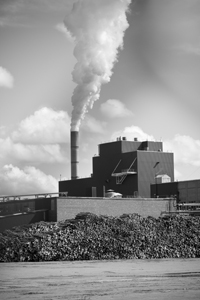
A few companies have announced price increases of $2 per hundredweight (cwt), or $40 per ton, for coated paper in the fourth quarter. But some industry experts doubt that the hike will go through.
Verso, Appleton Coated and New Page announced increases for coated freesheet in the fourth quarter, says Gary Evjen, senior vice president of sales at Wade Paper Corp. But he questions whether they’ll be implemented.
Why wouldn’t a price hike stick?
All the paper manufacturers are not on board. West Linn, for one, “is sitting on the sidelines, waiting,” Evjen says. Sappi, the only major producer with 100% of its product line in coated freesheet — the paper used most by catalogers — did announce a price increase for coated freesheet. But the hike applies only to cover weights.
Dave Goldschmidt, vice president of marketing, catalog division for paper brokerage Strategic Paper Group, says cover weights are the “heavier” weights, as opposed to text weights, which are lighter basis weights. New Page and Verso included both text and cover in their price increases, but Sappi did not support the full increase.
Meanwhile, inventories at printers and publishers are depleted and new print jobs require manufacturing paper at the mills. “The mills have to be hoping enough capacity has been shut to allow these increases to take place,” Evjen says.
Daniel T. Walsh, vice president of catalog/publication papers at distributor Bradner Smith & Co., says announced price increases that are not subsequently backed up by demand do not usually hold. And demand has been greatly reduced in the past year.
“The paper industry, both domestically and overseas, is currently in a state of contraction and outright decline, with the exception of the Chinese market,” Walsh says. “The domestic and international markets have seen unprecedented consolidations of mill companies and an overwhelming amount of individual manufacturing site temporary shutdowns and permanent closures.”
Mills continue to take capacity out; in the past two years, more than 1 million tons of coated paper capacity were removed from the market in each year, and still prices are in decline.
As the recession eases in the U.S., Walsh predicts, paper prices will certainly increase. According to forest industry research group RISI, coated paper demand will fall through 2012. “It remains to be seen how much demand will come back versus how much capacity has been removed from the market,” Walsh says.
Goldschmidt believes coated paper prices “started to stabilize as we approached the busier fall/holiday catalog season.” Demand is still down year-over-year and will never fully recover, “but end user and merchant inventory is down, and some coated capacity has been taken offline or converted to manufacturing of uncoated grades.”
Also, Goldschmidt says, “The weak dollar makes the U.S. marketplace less attractive for both Canada and Europe. This all will eventually lead to a better balance between supply and demand.”
Getting off the black liquor tax credit Paper mills got a boost this year from the Alternative Fuels Provision. Though it began as part of a 2005 highway bill as a tax credit intended to promote alternative fuels for cars, an interpretation of the tax code by the Internal Revenue Service last September enabled paper manufacturers to get in on the credits.
(Paper firms can use what’s known as “black liquor,” a thick, dark liquid created when wood is transformed into pulp to make paper, to run their mills.) Because the payouts from the tax credit have been much more than expected, the Obama administration is rewriting the alternative fuels provision to exclude the paper industry for the fiscal year 2010 budget proposal.
If the black liquor tax credits go away by the end of the year, “it could potentially lead to further mill or machine closures, if any were being propped up by these significant credits,” says Goldschmidt. When you add in rising pulp and fuel/energy costs, and the black liquor tax credit going away, “we may actually see paper pricing start to go up toward year end or early 2010,” he says.